| POTTSTOWN MERCURY, Pottstown, PA., Thursday,
February 23, 1961 Dentists Pull Teeth,
Clowns Act Up in Old Penny Banks
(Editor’s Note: Mr. and Mrs. William Roup, of
301 Grandview Road, collect old American toys – in particular, mechanical
penny banks and horse drawn carriages. This is the first in a series of
articles on their collection – one of the most complete in America.)
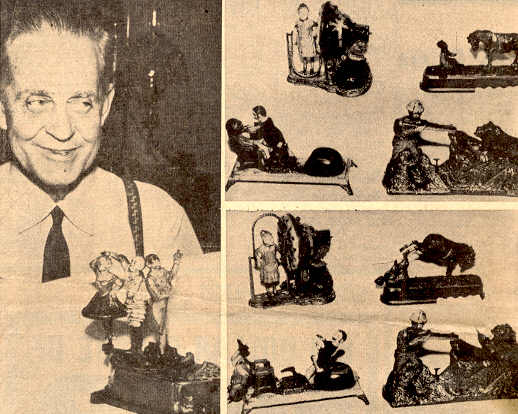
The toy banks of yesterday can be compared to the cartoon of today –
sometimes funny, sometimes tender, sometimes an insight into America itself.
Place a coin in a Dentist’s bank, and the dentist yanks away on the
patient’s tooth, the tooth comes out, the patient falls back out of the
chair – and the coin disappears.
Place a coin in the Harlequin bank and the three sad figures of
traditional English pantomime – the clown, the columbine and the Harlequin –
begin what seems to be a last farewell dance.
Place a coin on a plank labeled monopoly and it is sledge-hammered
off into the rich man’s barrel by an over-burdened worker.
More than just a bank?
“Not really,” say the Roups, “but just an example of an art that no
longer exists – an art that made saving just as profitable as it is today,
but twice as much fun.”
* *
*
THE ROUPS should know. Two of the foremost collectors of the
mechanical penny banks – and other old American toys – in the United States,
they now have over 150 of the small cast iron coin collectors in the white
paneled basement of their home.
They began their collection some 15 years ago when they discovered an
Elephant bank in an antique shop. “We were fascinated with it,” Mrs. Roup
enthused. “You placed the penny near the elephant’s trunk, and when an
acrobat twitched his tail, the trunk swung from side to side, knocking the
coin into the base of the bank.”
The Roup’s discovery in an antique shop came at the same time the
collecting of old penny banks began to mushroom in the United States. Roup
estimates that “there are probably thousands of old toy collectors in the
United States, and at least 100 who just specialize in mechanical penny
banks.”
The “hotbed” of mechanical penny bank collecting is in Pennsylvania,
New York, and Connecticut, but the Roups keep up a coast to coast
correspondence with other collectors and dealers.
* *
*
THEY CAN’T really be called antiques, because the mechanical banks
are not yet 100 years old. The oldest date from 1869 and they were still
being made in the early 1900s. The latest in their collection is a 1921
model in which a penny makes a doll baby in an eggshell cry.
The Roups say three things fascinate them most about the mechanical
marvels. “First, they were all designed for pennies, second they work with
hair trigger precision and thirdly, not only were they designed to save
money, but to be enjoyed,” Roup explains.
“Mostly, though, I guess we just enjoy collecting them,” Mrs. Roup
explained.
But at least once the enjoyment turned into near horror. The Roups
own a bank called the Presto – the only one of its kind known to still
exist.
Roup removed one screw from the back of the bank to clean it and the entire
thing collapsed – into 28 watch-like parts.
“We just sat there staring at it in horror,” Mrs. Roup remembered.
“Luckily we had the original pattern papers and with the help of a trained
mechanic were able to put it back. But for a while we were in a state of
shock that bordered on near panic.”
Other Presto banks were made in tin, but the Roups’ is the only one
in iron. Insert a penny in the cash register shaped box and when it hits the
bottom, you look through a peep hole in the back and see that it’s turned
into a quarter.
“It’s done with mirrors, naturally,” Roup explains, “but the motto on
the front explains its purpose: ‘We offer aid to all who strive to make one
penny twenty-five.”
* *
*
THE BANKS originally sold for $8 a dozen, but were reduced to $2 a
dozen a year after they were placed on the market in 1886. “Evidently didn’t
sell too well,” John D. Meyer reported in a “Handbook of Old Mechanical
Banks.”
He also added that “To date none of these has been found,” but agreed
to delete that statement in his next book after seeing the Roups’ Presto
bank. “I guess one has been found.”
While the Presto bank is the rarest, the Harlequin is the most
popular “probably because of the action and the fact that it is so much fun
to look at.”
The three sad figures seem no sadder than Meyer. In his book he says:
“I can’t help saying ‘I wish I had this bank,’ but maybe sometime.”
“He won’t get it from us,” the Roups vow.
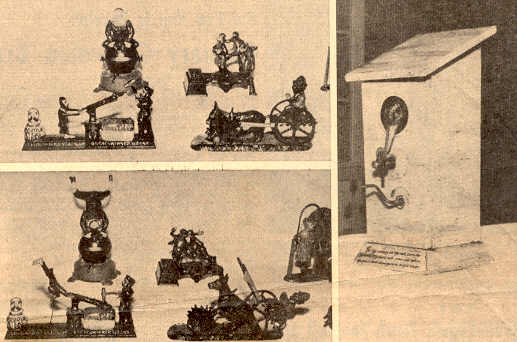
It was fun to save
in the old days, and for Mr. and Mrs. William Roup, of 301 Grandview Road,
it is still fun. The Roups have one of America’s most complete collection of
mechanical penny banks – including the Harlequin, shown in the picture with
Roup. When a penny is inserted, three tragic figures of English pantomime
dance around each other.
The Roups have more than 150 of the banks – including those pictured.
Those in the top pictures show the banks before coins were inserted, those
in the lower pictures after the coins started the banks in action.
The woodpecker slowly emerges from his birdhouse (in the picture on
the right) when a coin is inserted. Grabbing the coin from the slot, he
suddenly darts back into his house, where, in true woodpecker fashion, he
pecks away at the wall.
___________
(Another in this series will appear tomorrow.)
(Web Note:
Many thanks to Mrs. Edward Early, daughter of William and Lena Roup, for
providing a copy of the above article.)
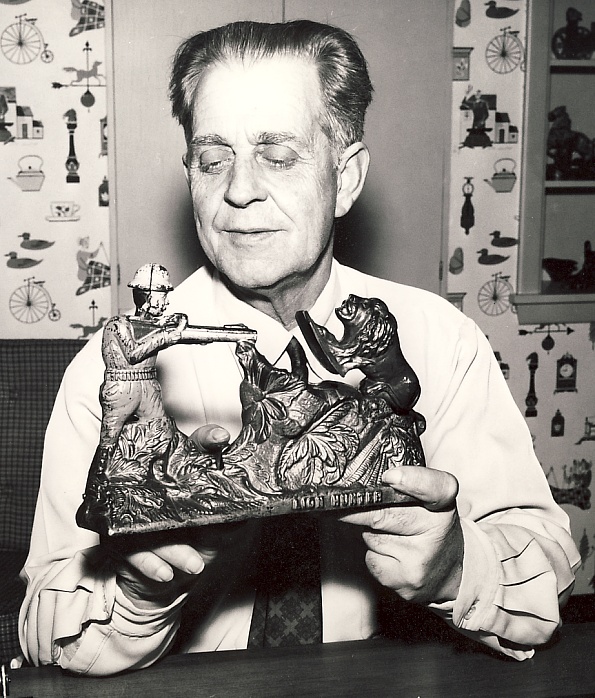
William H. Roup
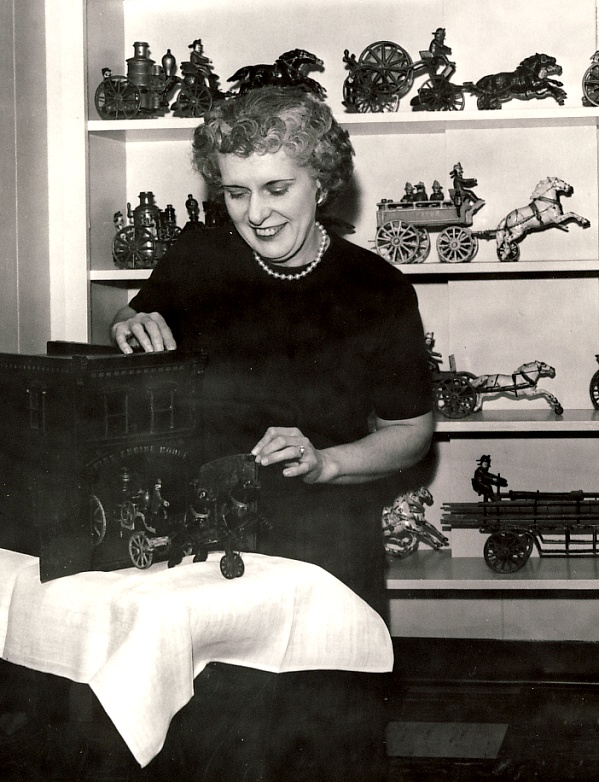
Lena Roup
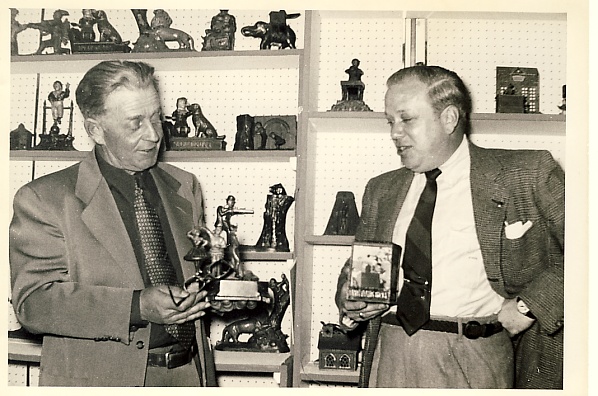
William H Roup
and Floyd
H. Griffith
|





